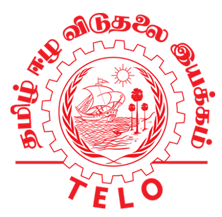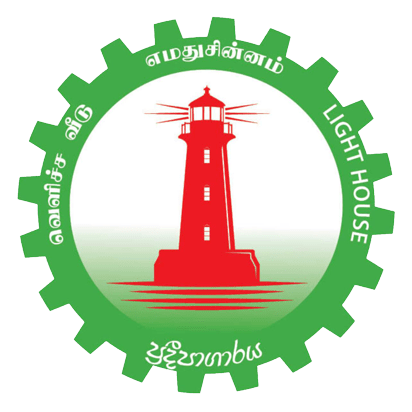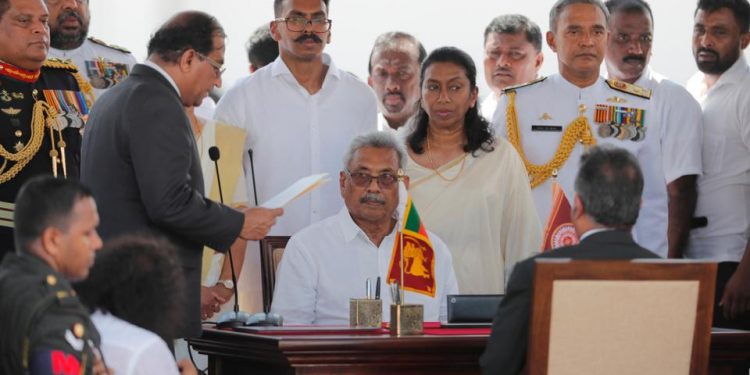Gotabaya Rajapaksa could have been a very much better President but he chose otherwise or let others choose wrongly for him.
The choice of Gotabaya as candidate and the wrong choices he made as candidate and President were assisted by those in the Yahapalanaya government who adopted wildly unwise policies.
The choice of Gotabaya as candidate was pretty much decided by the Yahapalanaya UNP. The 19th amendment could have been worded differently, to rule out a third CONSECUTIVE term, but it wasn’t. Instead, a third term was simply ruled out. This ruled out the kind of comeback that many leaders have made, from de Gaulle to Bachelet and next year, hopefully, Lula.
Imprudently regarding Mahinda as the main enemy though Gotabaya had revealed his dark side during the second term of MR, the UNP counted on GR failing to renounce his US citizenship and/or the special relationship that the UNP thought it had with Washington DC. (It did not reckon with GR’s own connections with Trump’s America.)
The result was that the far more moderate Mahinda could not run. Insofar as the Rajapaksas, like any other South Asian political clan, would keep it in the family, that meant one of Mahinda’s siblings would be the candidate.
Realpolitik
Given that Yahapalanaya had won, not by convincing a majority of the majority Sinhalese, but by basing itself on a majority of the minority voters plus a minority of the majority voters, the Rajapaksas needed to pick someone who could induce sufficient Sinhala swing as to countervail and overwhelm the electoral effect of the combined minority voters. That someone would have to swing the Sinhala vote so massively as to eliminate even the dissident Sinhala vote that went with Maithripala Sirisena.
Though Chamal Rajapaksa was considered by Mahinda, he opted out, and in any case, he was not as suited for the task at hand as was Gotabaya. Thus, the needle always flickered to GR, and eventually stayed there.
There was one last chance that the Gotabaya candidacy could have been headed-off. That was the Maithripala Sirisena-Mahinda Rajapaksa move of late 2018. Had it held, one of several things would have happened: (a) Sirisena could have run again (b) Chamal or Dinesh may have been agreed upon as candidate (c) GR may have run but with MR and MS holding the reins.
With the failure of the MS-MR stopgap, the GR project was the only option, and it was free and clear of MR’s control. Yelling “wolf” about a “52-day coup” when there wasn’t a soldier in sight, the Colombo neoliberals and all of us besides wound up with a regime studded with serving and retired military officers. Worse: a possible Myanmar outcome stares us in the face.
That was the realpolitik of it. The real problem was not so much in the choice of GR, but in the choice GR himself made.
Gota’s Choice
If I may strike a personal note while reflecting on the Gotabaya presidency? About to turn 65 next month, I felt rather proud to read the following paragraph in these pages from the young writer I regard as the successor to columnist Ajith Samaranayake, namely Uditha Devapriya:
“Paradoxically, the yahapalana government made it possible, not merely for a Rajapaksa restoration, but for the election of the former president’s brother. Parallels with Napoleon Bonaparte and his nephew notwithstanding, there was little that stood in Mr. Gotabaya’s way. He had a world to win and a country to preside over. In November 2019, then, almost every community, including sections of ethnic minorities, gave him support. Even political commentators who had penned diatribes against him raised the possibility of better days ahead. Very few thought otherwise: among them, Dayan Jayatilleka stood out. This was as it should be: no one wanted to back a dead horse, and Ranil Wickremesinghe’s UNP, for all its history and heritage, seemed like a relic of some distant, dark past.” (Battling the blues – The Island)
There were two models of the Gotabaya candidacy and presidency. One was Mahinda’s. The other was that of the GR groupies, which involved the owner of the local Fox News, GR’s ex-military buddies, the very rich far-right Sri Lankan expatriate Trumpians in LA where GR lived for over a decade, a few ultra-right Buddhist monks and professionals/academics grouped in Viyath Maga and Eliya.
What happened in Sri Lanka at the time was very similar to what happened in the USA, in the Republican Party in 2008 and 2016. The choice of Sarah Palin was forced on Senator John McCain, by the Tea Party movement which was increasingly influential in the Republican party. Sadly, for McCain and happily for the USA and the world, that sank the Republicans and put Obama over the top.
The Tea Party movement didn’t give up, and hence the Trump candidacy. With the ideal opponent, the neoliberal-interventionist Hillary Clinton, Trump won.
Those who know US politics would know that the rightwing Republicans were strong in the republican party in California—unusual because the state was so liberal. Those who know Gotabaya Rajapaksa would know that this was precisely the ideological grouping that he and his fellow Sri Lankan expatriates (which include the super-rich and the ex-military) existed in and contributed to, in LA.
That was the type of candidacy and presidential project Gotabaya Rajapaksa chose over the Mahinda perspective for a Gotabaya presidency– that of mainstream, moderate-nationalist, center-left populism which had been the staple of the Rajapaksas and the SLFP for decades.
MR envisaged basic continuity with a new technocratic-nationalist edge provided by the Gotabaya ingredient– the SLFP’s Sinhala Only in 1956, but ‘Lite’. By contrast, Gotabaya’s preference was for an Alt-Right profile and project a la Donald Trump and Benjamin Netanyahu, the latter a hero of rightwing Republicans and a personal hero of Gotabaya Rajapaksa.
Gotabaya’s own presidential project was not safely anchored in the moderate-nationalist, center-left Mahinda constituency and camp. GR’s center of gravity was/is not the rural Sinhala heartland with its peasantry. It was/is the military. His home-base is not Medamulana; it is Saliyapura, the headquarters of his old regiment, the Gajaba.
Thus, his policy agenda and the trajectory of his presidency. The existential choice was his. Or rather, he chose to let his Far-Right militarist caucus mold his candidacy and presidency. Which is the same thing.


